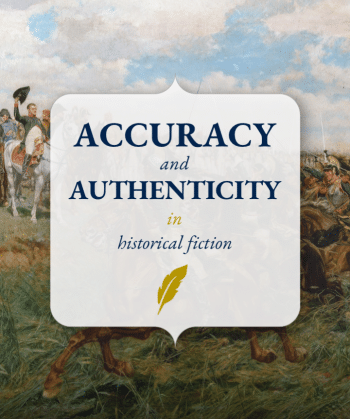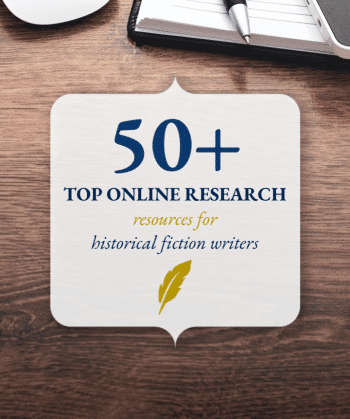The process of writing historical fiction can throw up some pretty tough challenges, but with a bit of knowledge, practice, and determination, it’s certainly possible to overcome them. To help you along, we’ve put together this post on the top five challenges of writing historical fiction, complete with some tips on how to surmount them.
1) History vs. story
One of the biggest challenges is knowing how to strike the balance between including too much or too little history in your story. Too much, and your novel will start to read like a history book; too little, and it won’t immerse the reader in the period. Neither of these extremes is desirable, but it can be hard to successfully tread the line between them.
In truth, only around five to ten percent of the historical research you do should make it into your story. But that doesn’t mean you shouldn’t do the remaining ninety to ninety-five percent. Even the knowledge that doesn’t make it into your book will prove vital in giving you a deep enough understanding of your period to reproduce it convincingly on the page.
The detail that does make it into your story should integrate seamlessly within it. Indeed, I always advise trying to build the history into the story as much as possible. So, if you were writing a historical action/adventure and you want to showcase the weapons of the period, it would be better to draw attention to them during, say, a battle that actually advances the plot, rather than just depicting your protagonist entering the armoury and inspecting them.
Likewise, if you’re trying to explain the historical background of your period, use a combination of narrative exposition, dialogue, and internal thought to convey it, and only do so when it feels pertinent to the story. Make sure any background information is broken up into bitesize chunks rather than dumped on the reader all in one go.
2) Whether (and how far) to bend the truth
For some historical fiction writers, nothing provokes more anxiety than the question of whether – and how far – to bend the truth in pursuit of a good story. There are as many opinions on this as there are historical novelists, and in a sense there’s no right answer. Nonetheless, the more you bend the truth, the more likely you are to spark a backlash. On the other hand, if you tie your own hands completely, your story may well suffer for it.
As ever, the best approach is usually to chart a reasonable middle course. Here are some guidelines that will you to do that:
- Always include a historical note at the end of your novel. This is where you can explain and justify any historical inaccuracies, as well flesh out more of the background behind your story. If you’re upfront with your readers about what you’ve changed and why, they’re more likely to respect your decisions.
- There’s a difference between altering verifiable facts and filling in the gaps. History is full of mysteries, unanswered questions, and gaps in the record. If something isn’t knowable, you have far more room for manoeuvre than if you’re contradicting easily verifiable facts.
- Much of history is open to interpretation. It’s possible to contradict the conventional wisdom about a historical event or person as long as you can back it up with sources that support your perspective. Even rumours and subtext can sometimes serve as legitimate material for historical storytelling, as long as you’re open about it in your historical note.
- Justification is important. If you’re making clear changes to the historical record, such as adjusting timelines or depicting military engagements that didn’t happen, make sure you have a good reason for it. Don’t just change things for the sake of it – only do it because it aids the story.
- Plausibility also matters. If your invented military engagement isn’t based on historical fact, it should take place in a context where it wouldn’t have been unusual. Even if your character arrives somewhere a little earlier than they really did in history, it should be possible for them to have done so (e.g. they shouldn’t have been imprisoned or incapacitated at the time).
- The more verifiable the fact is, the riskier it is to contradict it. The same is true with historical figures. If they’re very well known and their life is well documented, you have less room for manoeuvre than if they’re a more marginal figure about whom relatively little is known.
For more guidance on accuracy and authenticity in historical fiction, I recommend you download our full guide below.
Accuracy and authenticity in historical fiction

3) Using historically authentic language
Historically authentic language is vital for immersing the reader into your period. There’s nothing more jarring than reading a historical novel in which the dialogue is full of modern colloquialisms. At the same time, it’s obviously not desirable to write dialogue as if you’re Chaucer – you want the reader to be able to actually understand the story as well. That’s why authenticity – rather than absolute accuracy – is key. The difference is in giving your reader a flavour of historical language rather than necessarily the full reality of it.
The trick is to focus mostly on using neutral language – words and phrases that could be at home both in the past and today. Avoid modern colloquialisms at all costs, and include a few archaic words and constructions here and there to make sure the language feels sufficiently historical.
Try to avoid using words that weren’t, in some form, used during your historical period. However, this becomes more and more difficult the further back you go, and at a certain point it won’t be practical. If you’re not sure about a word, use Etymonline and Google Ngram Viewer to check on etymology and usage during your period.
The best way to absorb the language of your period is to read primary sources, including literature written at the time. Again, though, this becomes harder the further back you go.
4) Getting the little details right
Capturing the minutiae of every-day life in your period can be really challenging. Sometimes, it can be hard to know how much to include and how to integrate it. Even more fundamentally, it can be hard to know how to find the information you need in the first place.
Like with history vs. story in general, the best approach to depicting every-day life is to build it into the story, making sure the detail doesn’t get in the way of the plot. Don’t overdo it; provide enough detail to give the reader a flavour of life in your period, but not so much that your story starts to read like a history book.
As with language, the best way to discover the little details of every-day life is to read primary sources. Literature, letters, and diaries can all be useful for this. My secret trick, though, is to use travel diaries – diaries written by foreign visitors to your period and place. Visitors tend to note things that ordinary residents would not – the little facets of life they found strange, but which residents would have thought too mundane to include in their own records.
5) Knowing how much research to do
How much research is enough? When can you really feel confident that you know enough about your period to start writing? This is a common dilemma.
First, if you’re feeling frustrated because you’re buried in research and you can’t seem to make progress on your novel, remember that research is part of the writing process. An afternoon spent researching is just as valuable as an afternoon spent writing. It’s important to get into the mindset where you acknowledge that and allow yourself to research without feeling guilty.
If you’re finding it difficult to know when you’ve done enough research to start writing, you could try making a list of key questions about the history of your story – the questions you really need to know the answer to before you can write it accurately. Then, once you’ve reached a point where you can answer them satisfactorily, you’ll know it’s time to start writing.
The truth is, though, being ready is often more of an intangible ‘feeling’. When you come to feel it, it may have more to do with your own confidence than the amount of research you’ve done.
So those are the top five challenges of writing historical fiction, complete with some tips on how to overcome them. Writing in any genre isn’t easy, but the challenge is part of what makes it worthwhile. These tips should help you get over the inevitable hurdles and come out on top!
If you’re looking for research sources, make sure you download our 50+ top online research resources for historical fiction writers below. And if you want to learn more about writing historical fiction, do take a look at our other top guides: Top tips on writing historical fiction from 64 successful historical novelists and How to write historical fiction in 10 steps.
50+ top online research resources for historical fiction writers




